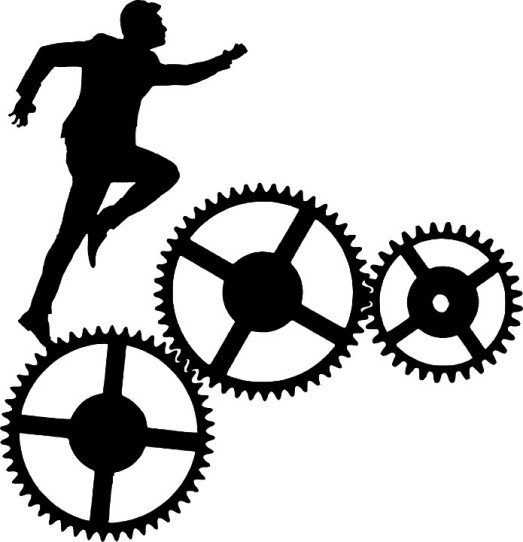PART 5: EVERYONE WANTS INNOVATION BUT FEW KNOW HOW TO BE INNOVATIVE
If leaders are keen to pursue innovation, they can consider introducing innovation training to develop organizational skills.
Some corporations have been leaders in creating new ideas, introducing new ways of living, and influencing positive change for their customers and for society and they have contributed to our lives in every way: economically, socially, personally, and professionally. These corporations have learned that they would be left behind if they were unable to adapt to the fast-changing world. The ability to adapt is the ability to innovate and is exactly what is needed to not only keep up with change but turn change into an advantage. This innovation capability not only assures profitability, but also makes the world a better place.
These successful corporations stand out because of their ability to discover new problems, not only within their own operations but also new emerging problems within our society. For example, mental health is now recognized as a major problem. A main reason that many people are depressed is the feeling that life is passing them by, and they feel helpless to cope. Without the ability to adapt, people falter and find it overwhelming to keep up with our rapidly accelerating society.
Innovative corporations are tackling the issue, as they realize that mental health problems have a huge impact on their own employees and their customers. This is a problem that we could all address if we, as individuals, had the capability of thinking innovatively. When people collaborate and work at meeting desired objectives together, the result will always be fulfillment, personal growth, success, and innovation.
THERE IS RISK INVOLVED
Along the way I, personally, had to take many risks that I feared would jeopardize my career and challenged my family. These challenges proved to be risks that were well worth taking. I will admit that it helped to have a supportive company, colleagues that understood my work and my family. As I look back, by developing the Basadur Profile and the Simplexity system, I was trying to help others take the right risks and find the right problems to solve. Both the Profile and the system evolved over the years, as I continued to help corporations find their own way of achieving innovation.
Some organizations were willing to take the risk with me more than others. As an example, the road to innovation seemed to be well on its way with successes experienced at Frito Lay, Ford, Kimball and others. Unfortunately, this trend was disrupted in the early 1990’s when an abrupt recession hit hard. Other industries that I had hoped would seize innovation as an opportunity to take the lead fell backwards into an efficiency survival mode. In trying to retain profitability they utilized short term cost-cutting measures euphemistically called “re-engineering”, “rightsizing”, “downsizing” and other inward-looking methods. Mostly, this meant cutting jobs, firing people and doing whatever they had to do to stay in business. Many companies could not keep up and were unable to hold on to an ever-shrinking market and bankruptcies flourished.

After the recession receded, the survivors began to vigorously learn to adopt and apply Lean and Six Sigma methods to create a culture of increasing efficiency (but not innovation). They trained and developed skilled practitioners who could involve employees in events focused on improving the quality and cost of a selected process. This was called process improvement. This was not innovation.
This approach to business has continued until today but many companies have begun to realize that they have hit a brick wall. They have found that they cannot grow their business by continuing to become more efficient. No matter what they do, countries like China would always do it faster and cheaper. There’s finally an understanding that innovation is a necessity to climbing out of this box, but they aren’t sure where or how to find it.
FINDING INNOVATION
It has been our experience that some corporate leaders tend to avoid taking the risk to change the status quo. Many seem satisfied with playing safe, making sure they “make their numbers” year after year. They don’t want to fall behind their competitors or their peers. Worse, they don’t want to make a mistake by trying something new that deviates from the norm. This is especially true in subsidiaries of global companies where people feel they must check with headquarters on almost all decisions and never deviate from company standard practices. This stifles the opportunity to demonstrate creative leadership and it is managing defensively to maintain the status quo.
We really believe that the only way for someone to stand out is to use their creativity to make new and better things happen. Therefore, to become this kind of leader, one must learn how to innovate. This involves generating new ways of doing your job, motivating your employees to do their jobs, and guiding your company to become the industry leader.
HOW TO START?
One small step that leaders should consider is to ensure that there is sufficient generator capability in their organization. Generation is the first stage of the innovation process, but it is very often overlooked. Our research confirms that generators are the smallest group of people in virtually every industry and at every hierarchical level. This is because of the pressure most companies feel to achieve short term objectives. They tend to ignore future possibilities, future growth and long-term organizational health because they cannot see immediate results. It is easier to focus on immediate priorities that impact their short-term objectives rather than integrating long-term thinking into their organizations.

The Profile is a unique gateway to help leaders understand how their employees can learn to enjoy working together innovatively and achieve superior results using a consistent innovation process. As an added bonus, the new innovative skills will speed up short term efficiency problem solving while at the same time, achieving adaptability goals.
HOW THE PROFILE CAN WORK IN YOUR ORGANIZATION
1. Managing Change and Innovation
Leaders can use the Profile as a structured blueprint to begin an innovation effort. Not only can the Profile help employees become trained in applying and facilitating innovation workshops, but the leader should also make sure that all of the Profile thinking styles are represented whenever an innovation endeavor is planned.
I remember when I was invited to work with a large aerospace company that served aircraft, airline, and aerospace industries; they were not following the blueprint described above. A key objective was to develop new products and new markets at a faster pace. When I distributed the Profile to several teams of managers, most of the teams lacked a single generator. This was an important finding because generators represent the beginning of innovation and are needed to surface new customer problems and find fresh commercial opportunities.
Faced with this, senior management introduced Simplexity training to increase awareness of generation as the beginning of problem solving and necessary for any innovation to take place. They decided to recognize and reward people who achieved skills and demonstrated success in generator activities. They also offered headquarter funding to all 28 business units for generating new projects of high potential to motivate them and they would not have to use their own budget to implement the projects. This resulted in generator activity throughout the company and many profitable projects were developed. The company achieved their growth objectives with increased revenues and share prices.

Not surprisingly, our research shows that only 16%, the smallest percentage, of all styles are generators at every managerial level, including executives, and across all corporations. Organizations need to ensure that the generator skill level is valued and represented for innovation to thrive.
2. Improving Team Performance
The Profile provides an easy method of setting up and leading teams, forming a new team with the right mix of styles, diagnosing team problems, team building, and aligning team styles with strategy. Here’s a story about team performance that we like to call “Great ideas but no action”:
A traditional company that desperately needed innovation asked one of its managers to form a team to find a breakthrough idea. The team he chose did generate a raft of good ideas including some that were breakthroughs, but now the manager had a new dilemma. The innovation he wanted had stalled. There was no interest in evaluating or implementing any of the ideas. The team felt that they had finished their job. When I led the team to fill out the profile, all the team members were generators and conceptualizers. After consultation, the manager decided to augment the team with optimizers and implementers to have all four styles represented. This action resulted in the innovation he was seeking.
When change starts and then stalls, the reason may be an incomplete team. Ambitious leaders need to anticipate this occurrence and build the best possible teams to move innovative thinking all the way into effective implementation.
3. People Management
The Profile contributes to personal development and can also be a career development tool. It identifies skills that need improvement and can guide effective hiring and transfer decisions. The Profile can also assist with reducing or eliminating conflicts among group members as they will have a better understanding of each other’s differences, which may only be due to a difference in style of thinking.

One Friday afternoon, I was sitting at my desk at Procter & Gamble when a colleague, Brad McEwan stopped by. Brad was not happy in his job and did not understand why. He was part of the Marketing Department, well known for implementing new strategies, programs, products and just making things happen. I asked him to take the Profile over the weekend and we would meet the following week. On Monday, we discovered that he was a very strong conceptualizer in a department dominated by strong implementers. This explained why he was so unhappy.
Together, we discussed his options such as asking for a transfer, leaving the company, or making himself uniquely valuable in his department. He decided to use his conceptualizer skills to enhance his “implementer” department. Brad carved out a unique, value-added role for himself by firstly creating models of the workflows of Marketing Departments the world over and then secondly recommending changes that could take place to improve their department’s effectiveness.
Knowing his Profile helped him find a way to get his colleagues to understand how he could contribute and make the department’s workflow better. Being different was not only tolerated but was appreciated. He was so successful that he developed a worldwide reputation and demand for model building services throughout the company.
4. Leadership Development
Our research confirms that the most important skills for leaders in the 21st Century are driving change and developing new leaders who can also drive change. The Profile is a change making process that leaders can follow to make valuable improvements in their organization. The Profile also teaches employees how they can inspire others to want to change, sometimes informally, even though they may not have the authority to do so.
IMPLEMENTING THE PROFILE
Structure: Every organization needs people with all four styles and our research confirms that teams with a mix of all four styles outperforms teams with the same style. With this said, hiring decisions could be influenced on how well an individual will fit into their role and how well they will fit into the corporate culture and corporate objectives.

Achieving the right ratio of innovation styles is important with a focus on generators because generators are rare. It is important to maximize the value you get from them by ensuring they are correctly positioned within the team or organization. Hiring decisions also factor into the omission of the generator value.
Understand, there is no magic mixture of styles. The right mix will vary with industries (manufacturing vs. service organizations) or within departments (R&D, IT, Finance or Sales), or interdepartmental or cross-functional teams, or within non-management and management teams, or across teams.
Modeling: Senior executives should be seen performing generator activity and making problem finding very prominent. That generators are as rare at higher levels of management as they are at other levels of the organizational hierarchy is probably the most provocative finding of all. This provides an opportunity for senior leaders: they must demonstrate the importance of problem finding—top down—to their entire organization
In innovative organizations, leaders model problem-finding behavior. An important behavioral characteristic of generators is finding problems in one’s own role, department, or with customers and suppliers. Senior managers can find such people and promote their behavior as a desirable model for others to follow.

Reward: People go out of their way to avoid finding problems. This behavior is so prevalent that some researchers deem the activity of problem finding to be an extra-role behavior—one that requires individuals to go beyond the boundaries of their jobs to bring about positive change.
People avoid important problems that cut across organizational functions and department lines. “That’s not our problem,” as we have all heard many people say. Even on less daunting but solvable problems, people often assume prematurely that “it can’t be done” simply because of their unwillingness to challenge conventions or step beyond the boundaries of their current work.
Our field studies suggest that there is a clear solution to this limitation: companies should jumpstart innovation by making problem finding attractive for employees by offering rewards for this activity. Last year, the Wall Street Journal called 3M’s 15% rule, which invited employees to spend 15% of their time working on pet projects. Creating incentives for generator activity does work as our previous example of with the large aerospace company proved.
Train: Most business and business school training steers many future corporate leaders towards a preference for optimization and implementation. Management thought leader Henry Mintzberg documented that many managers operate primarily as short-term implementation doers.
Our research suggests that one way to train people in problem finding is by putting them into situations where generation can be learned. In a study of Japanese companies, we found that top companies place newly hired R&D engineers and scientists into the sales department to begin their careers, so they gain awareness that innovation begins with discovering customers problems. Solutions to those problems become new products.

Such companies also teach new employees in first day orientation training sessions that problems are “golden eggs,” and provide encouragement and simple structures for employees to identify problems as opportunities for improving processes and products.
INNOVATION IS WITHIN REACH FOR ANYONE WHO WANTS TO PUT IN THE EFFORT
Innovation is a process which can be managed and lead by skilled employees at any level within any organization. It is a process like any other process in an organization that needs constant attention. Every corporate strategic plan must include innovation objectives as well as cost improvement and other efficiency goals. Instead of a culture rewarding quick reaction, effective damage control and achieving short term results, developing innovation will reap much greater benefits but it does require patience, hard work, and dedication. It’s a mind shift to a new culture, an innovative culture that is essential to survive in the changing world of today!
Learn more about Simplexity, the Profile, and how Basadur can help uncover you and your team’s ability to innovate by CLICKING HERE.


